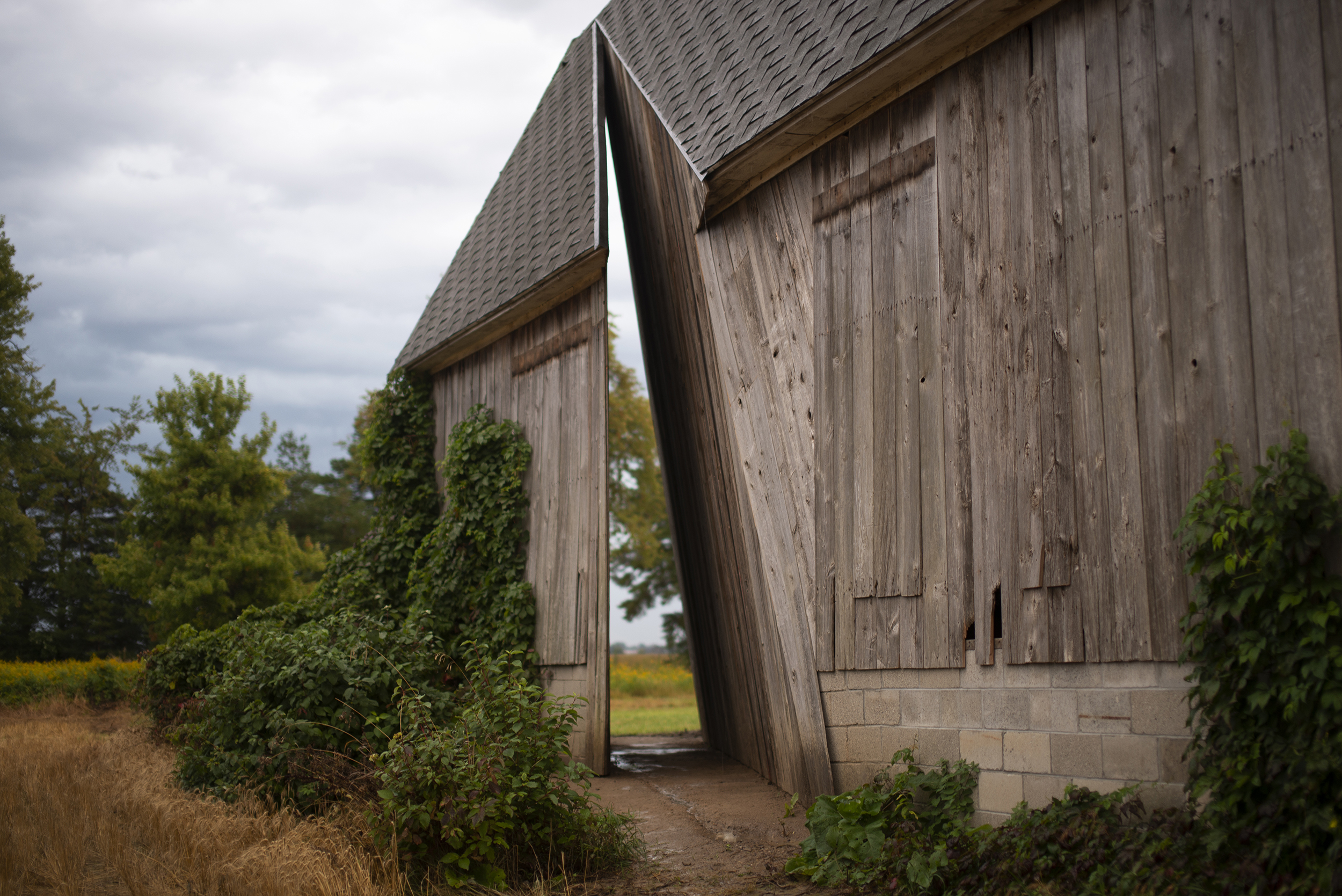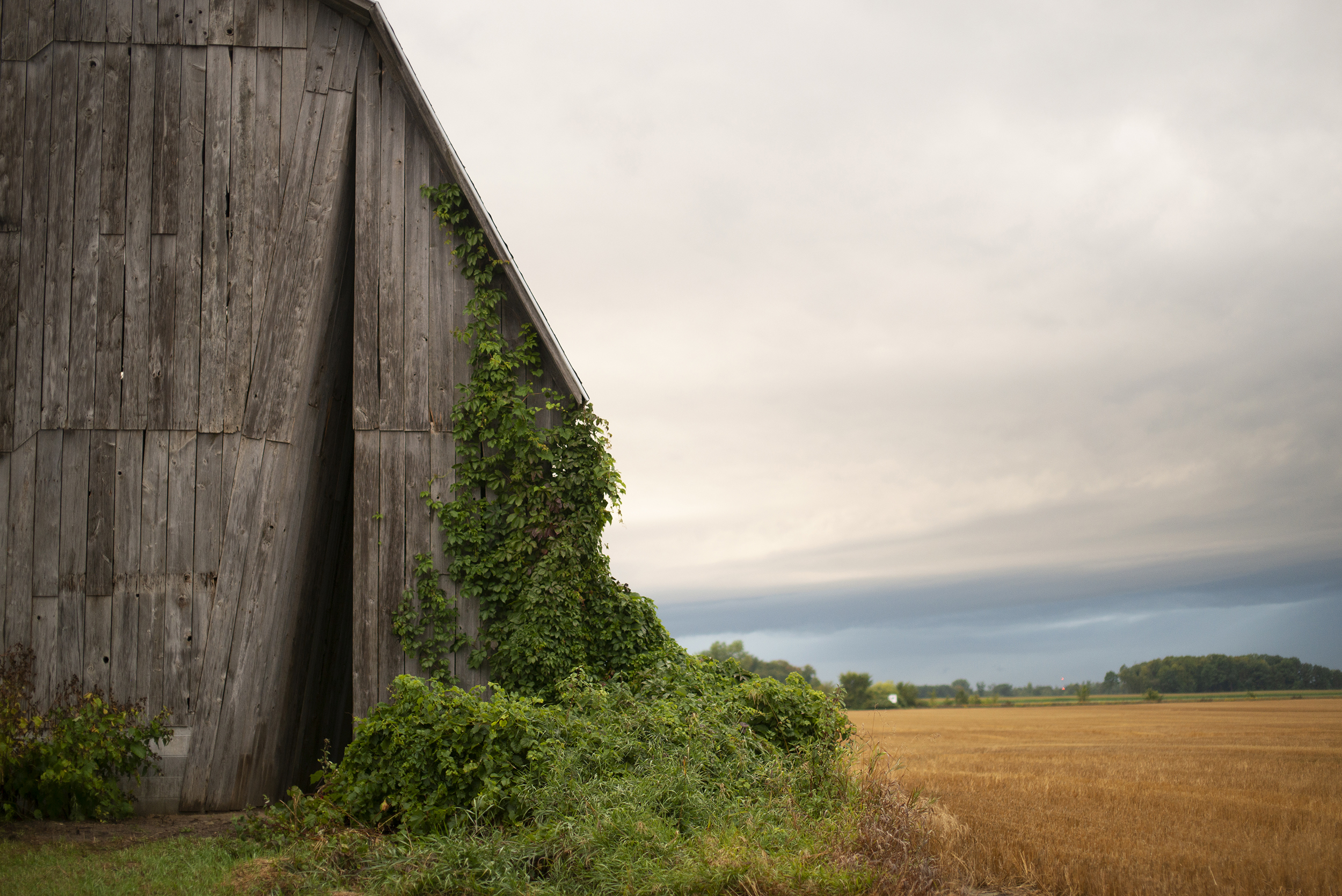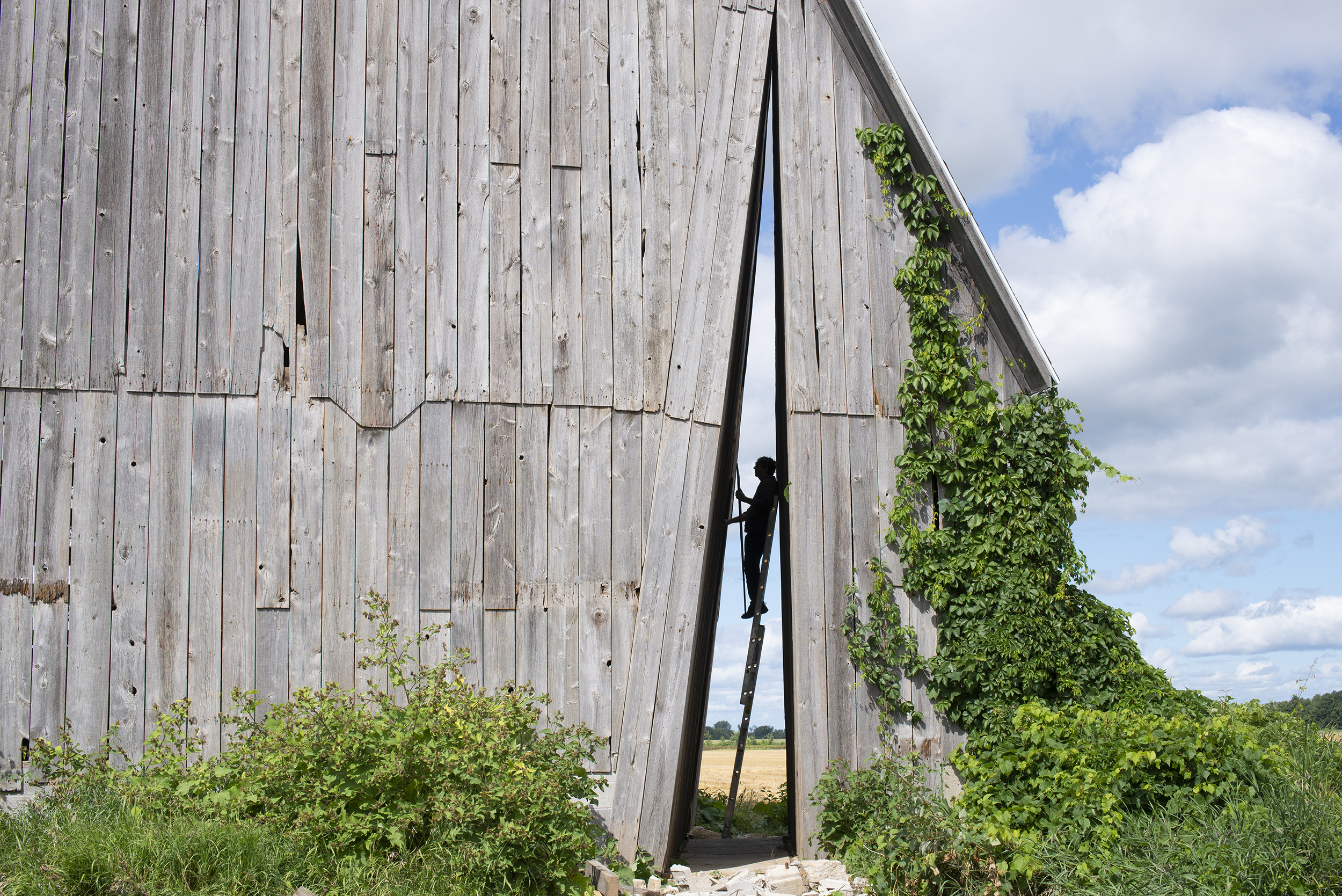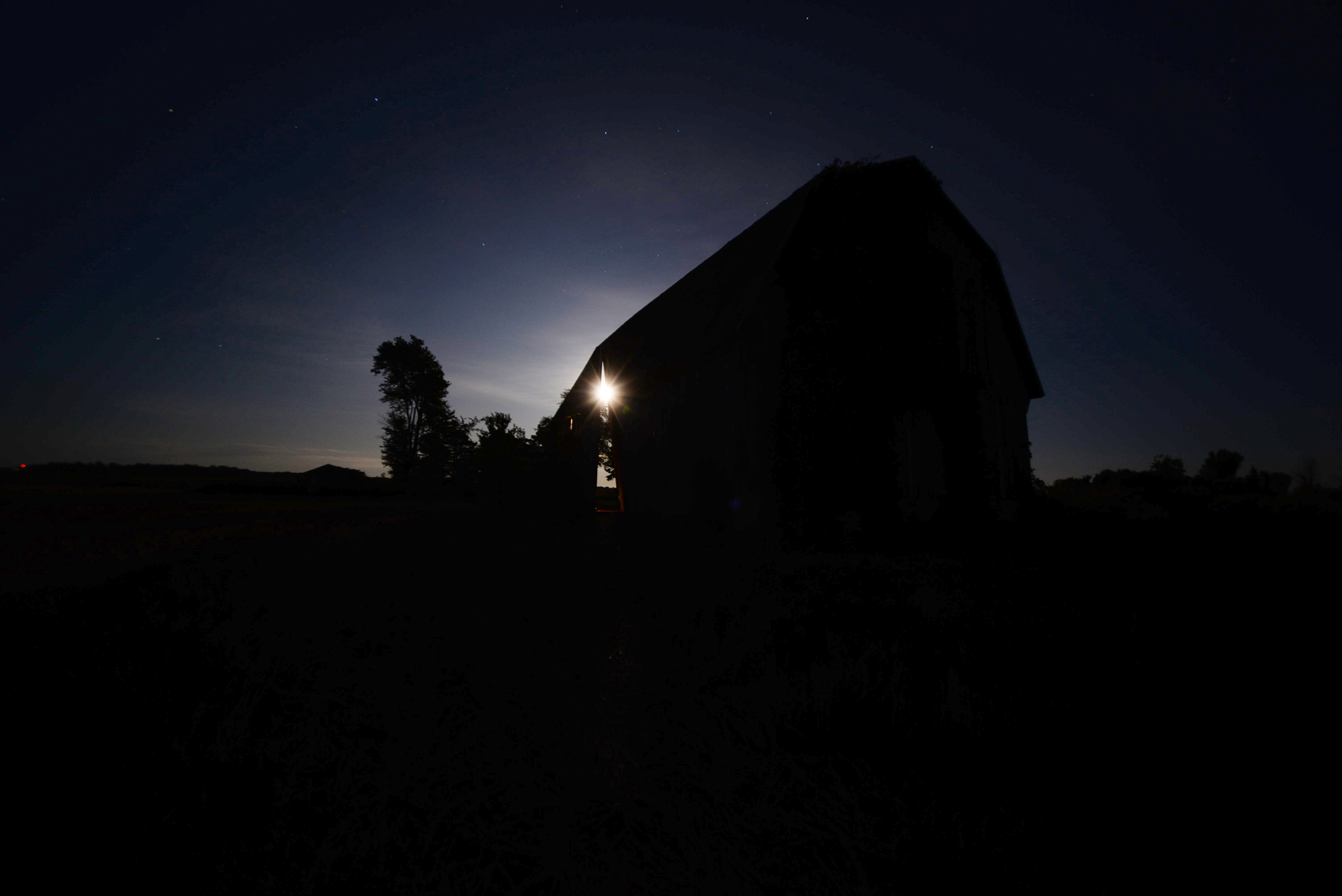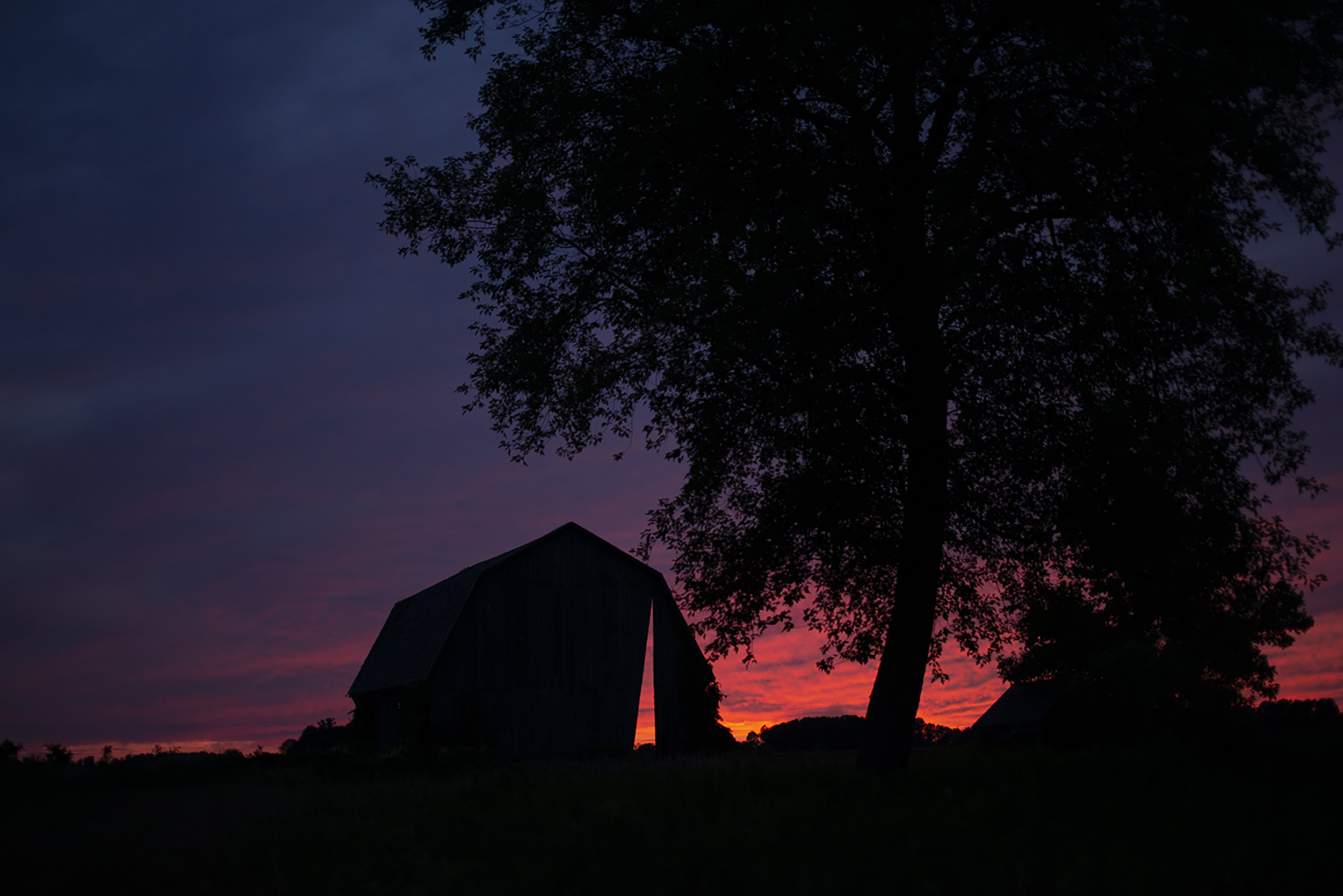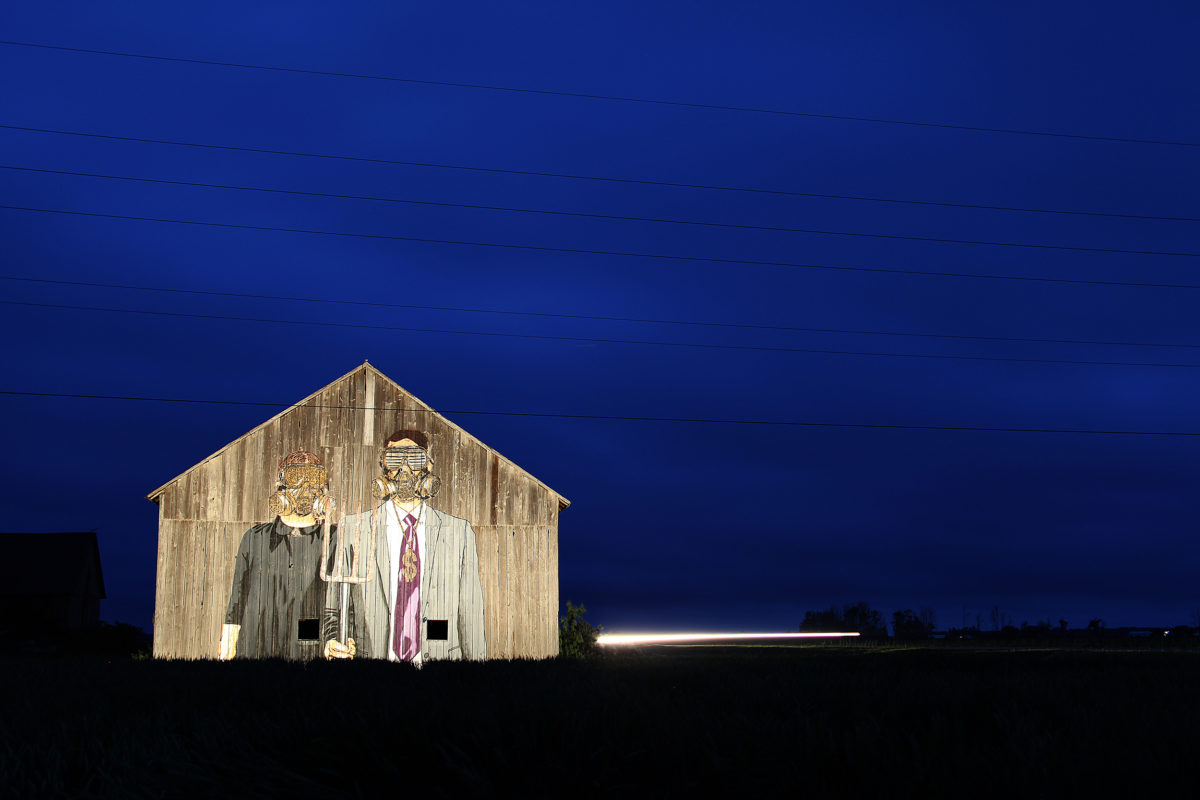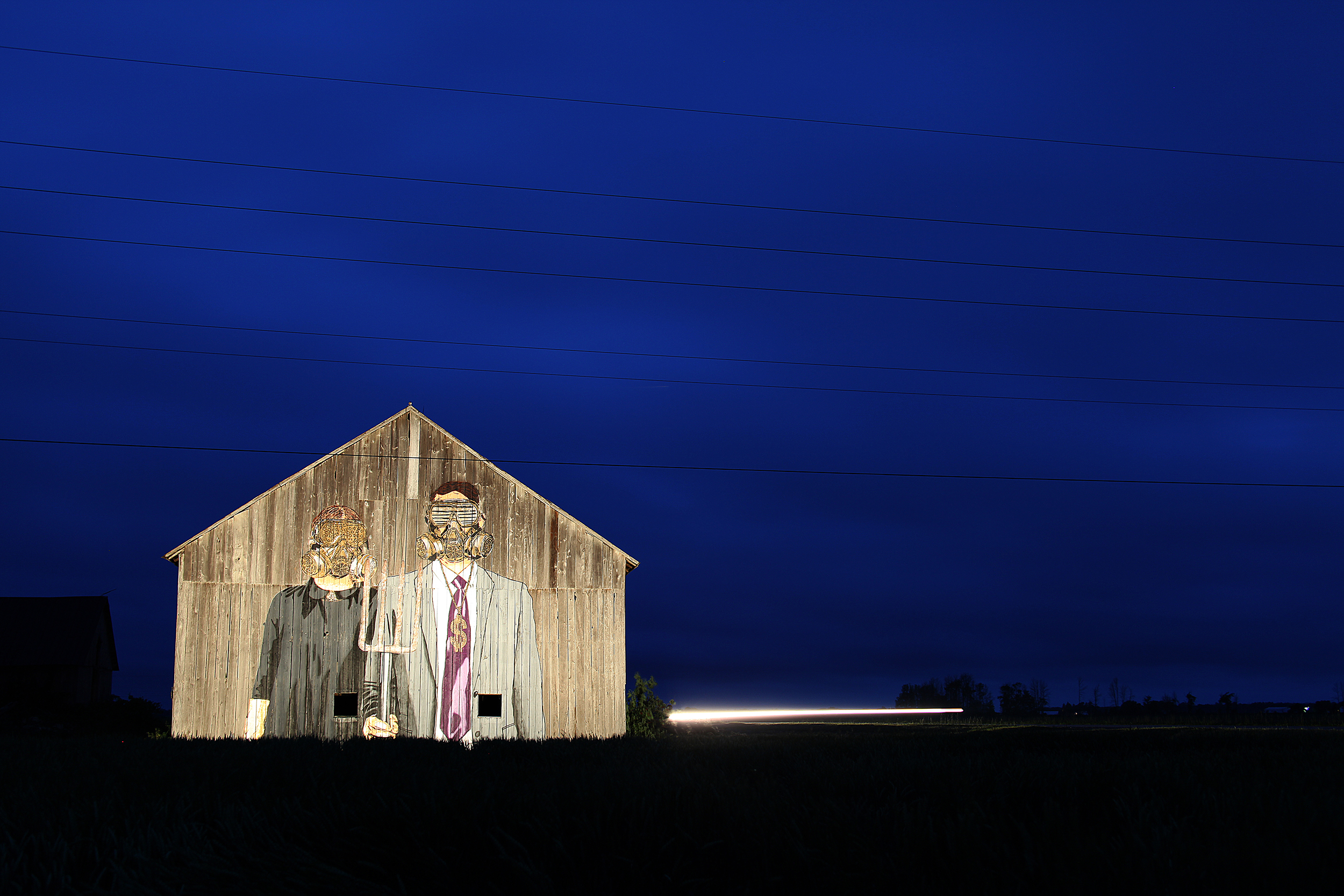At its southern-most tip, M-53 – also called Van Dyke Road – empties into the Detroit river on the city’s near-east side. Take it 140 miles north and it ends at the tip of Michigan’s mitten-shaped Thumb on the shores of Lake Huron, in a one-stop-light town called Port Austin. It’s this line, M-53, that connects me to the two places that I’ve called home for the greater part of my 52 years. I was born in Detroit, but my parents soon moved north to Port Austin for a slower life after my mom had a major stroke. I lived there for 18 years, and eventually returned to the home of my birth. I lived in Detroit’s West Village, one block from where M-53 reaches its southern terminus, for over 20 years.
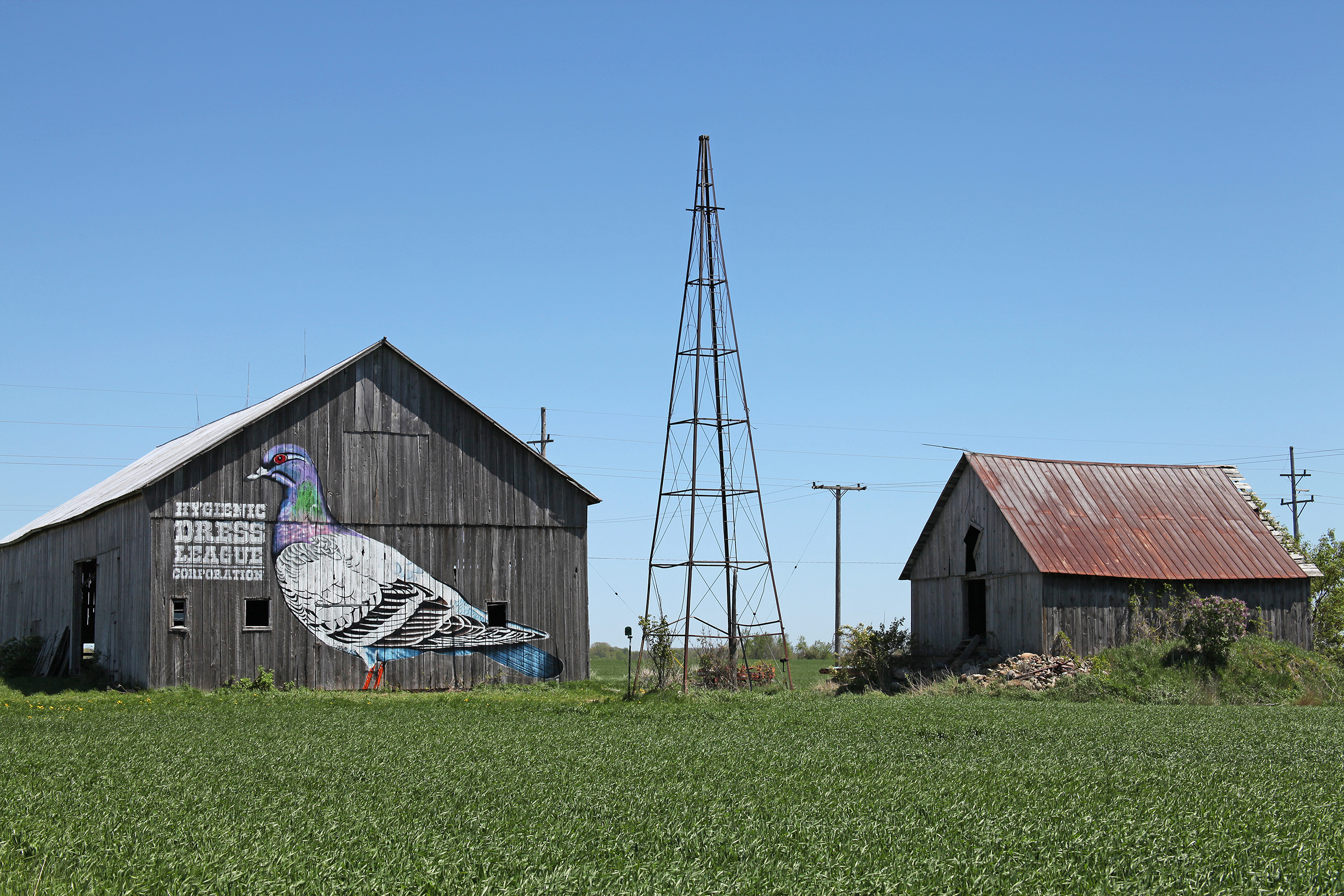
Corporate Brand, 2013
By Dorota and Steve Coy
Port Austin, Michigan, USA. Image courtesy of the artists.
THE FIRST INSTALLATION
The Coys’ Hygienic Dress League (HDL) is an ongoing public art project that uses the concept of a corporation (officially registered in the state of Michigan) as a new and original form of art. HDL’s work – including public installations, video art, billboards, and more – appears worldwide, challenging ideas of consumerism, corporate values, and social status. The idea of a work in Port Austin, a rural area that has been affected by a shifting culture in America, resonated strongly with the artists. When considering the history of barn facades as a medium for advertising everything from overalls to tobacco, there is a direct relationship to overarching HDL themes. In 2013, their piece, Art in the Public Realm: Rural Editions was born.
The work sits about two hundred and fifty yards off M-53, two miles north of Port Austin, towering on a fifty-foot barn that is still in use today. The front view, facing out to M-53, is of a now-fading, blue-grey pigeon and the HDL logo — advertising a corporation that proudly provides no products or services. Those lucky enough to drive around back are greeted with HDL’s fifty-foot take on Grant Wood’s American Gothic, arguably the most spoofed piece of American art history. Standing with pitchfork in hand are the two main characters in HDL’s ongoing narrative. On them are the gasmasks that have become associated with their work. Comical and beautifully rendered as it may be, it’s impossible not to notice a whiff of manure as you take it in, or to begin considering what exactly goes on our fields to feed an exploding population at scale. It’s this subversive humor that is the tension point in HDL’s work.
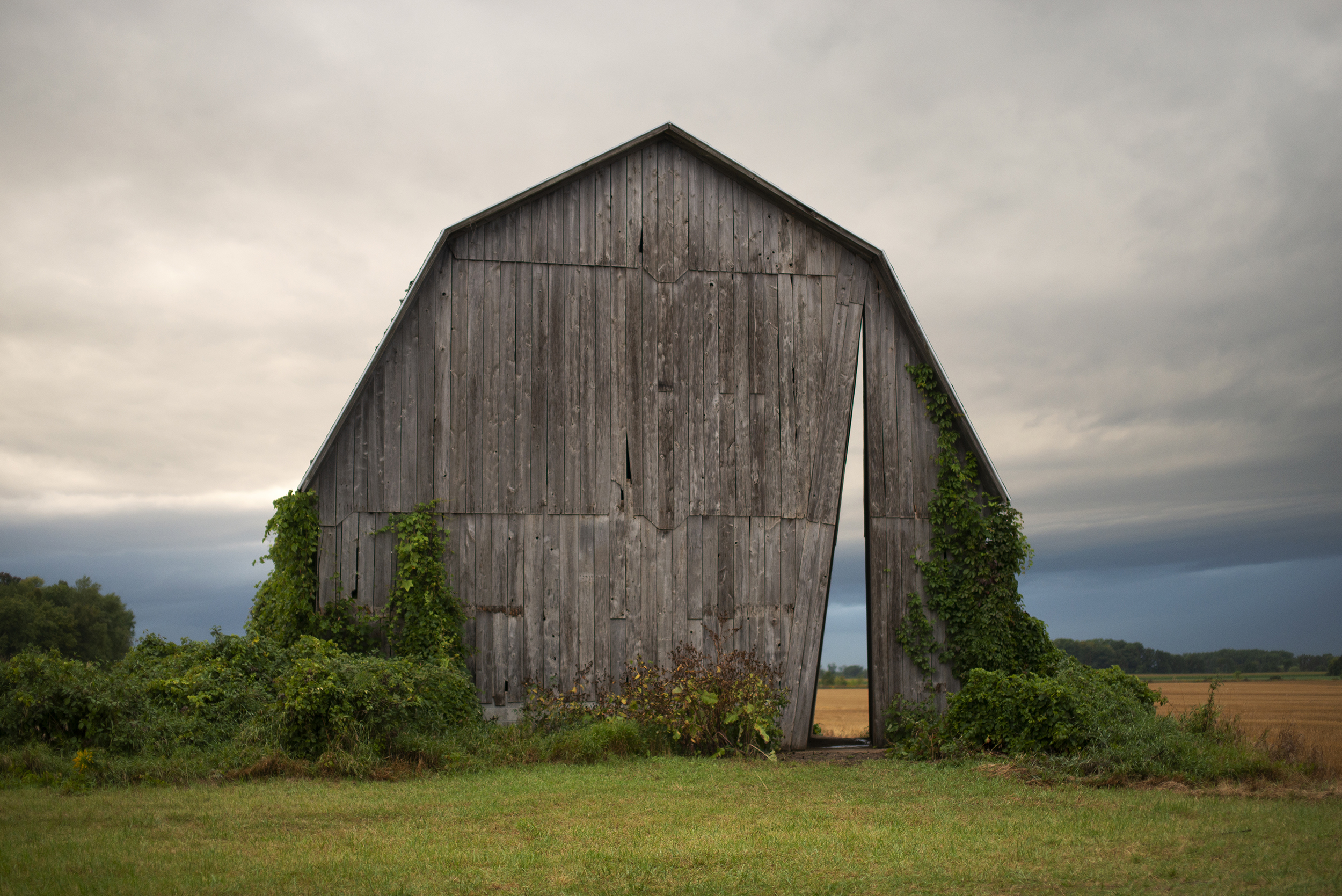
Secret Sky, 2017
By Catie Newell
Port Austin, Michigan, USA. Image courtesy of the artist.
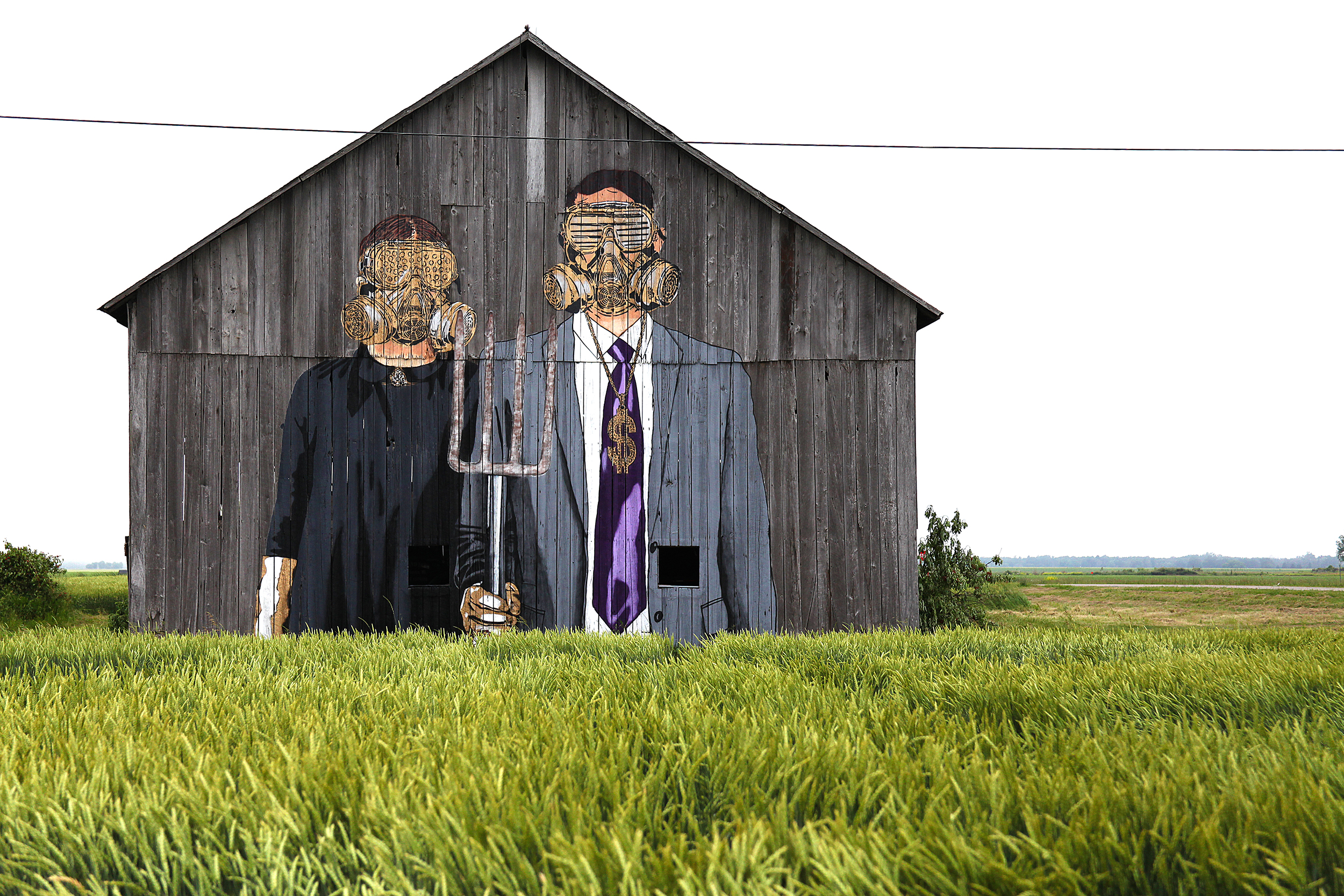
American Gothic (hygienic dress league remix), 2013
By Dorota and Steve Coy
Port Austin, Michigan, USA. Image courtesy of the artists.


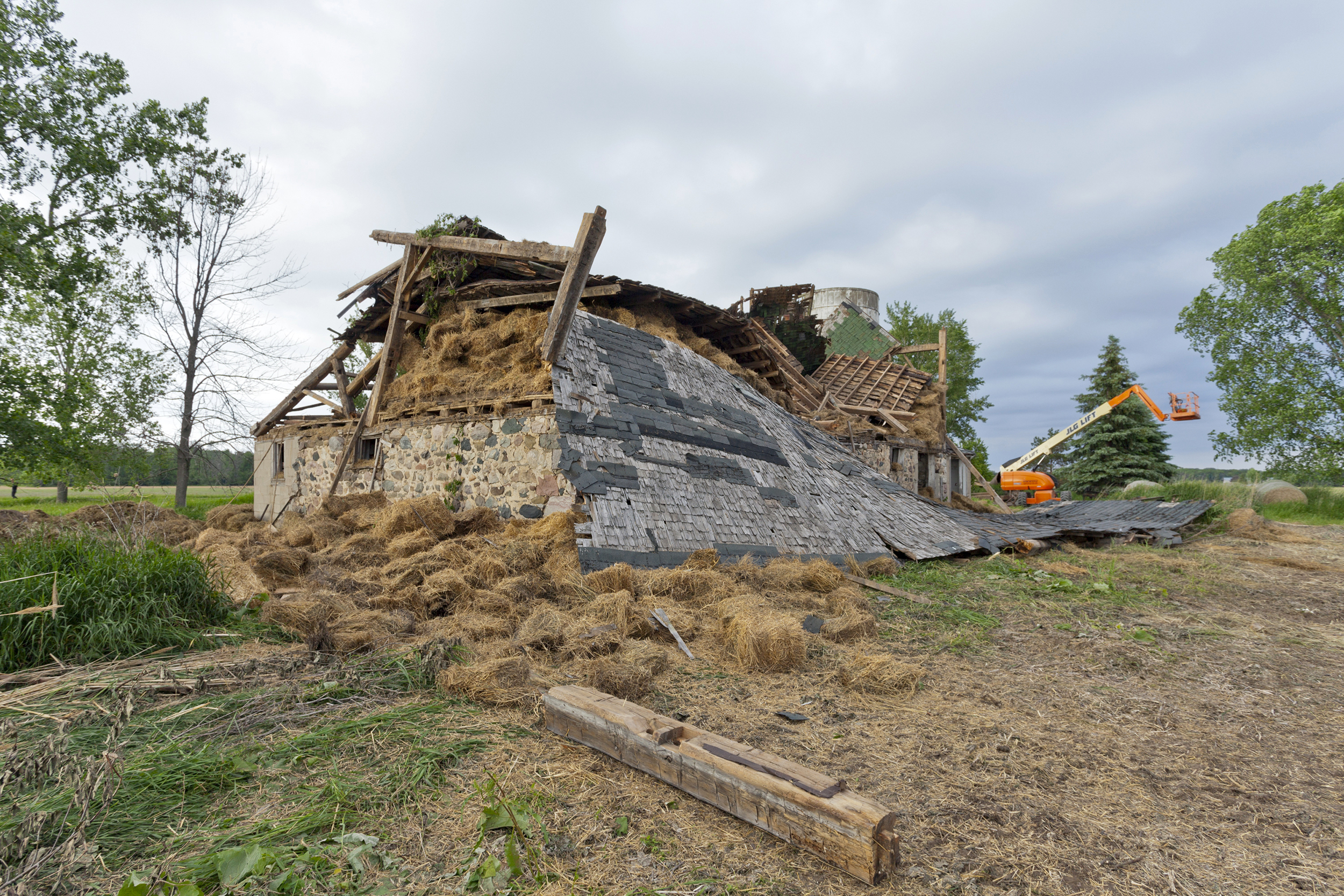
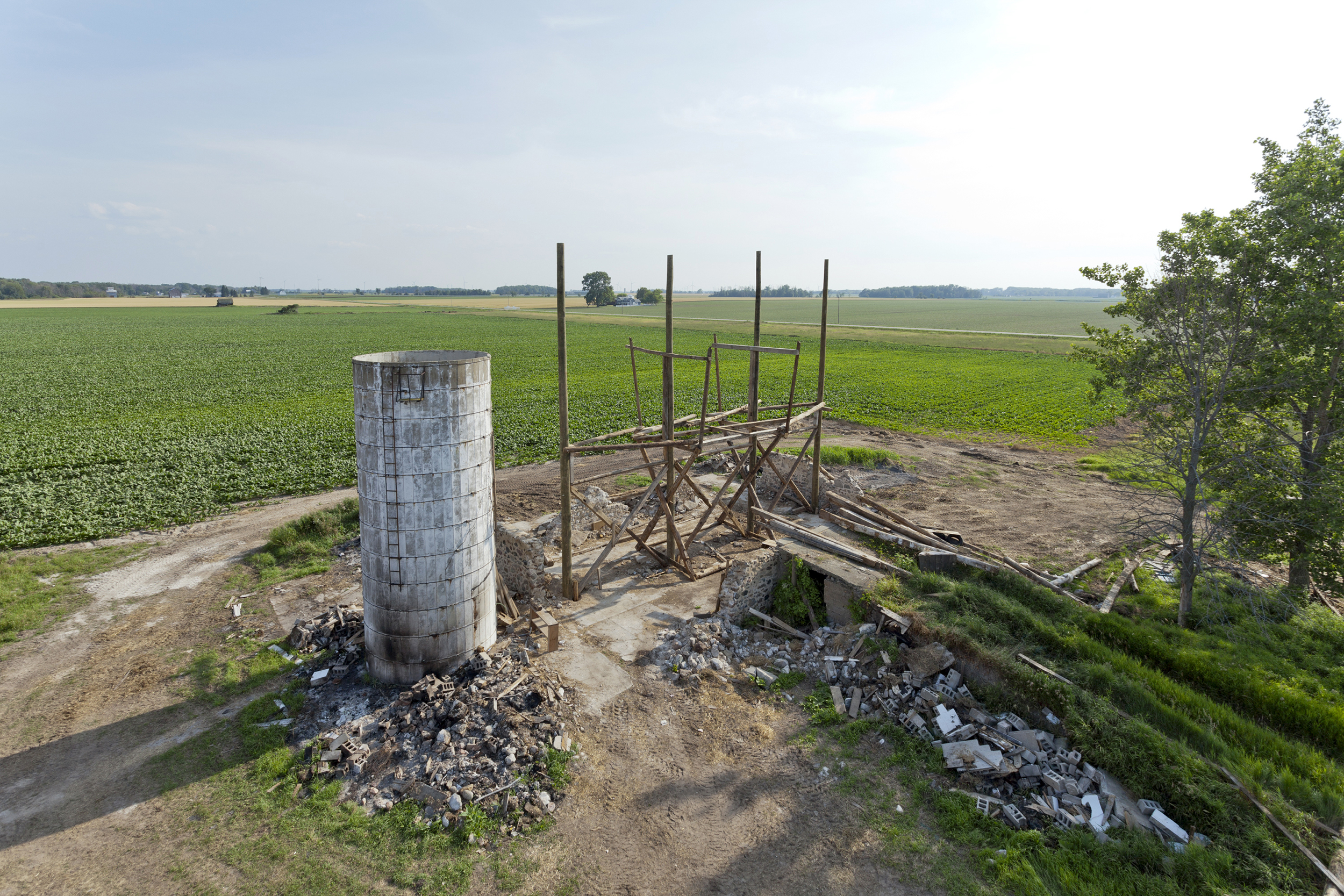
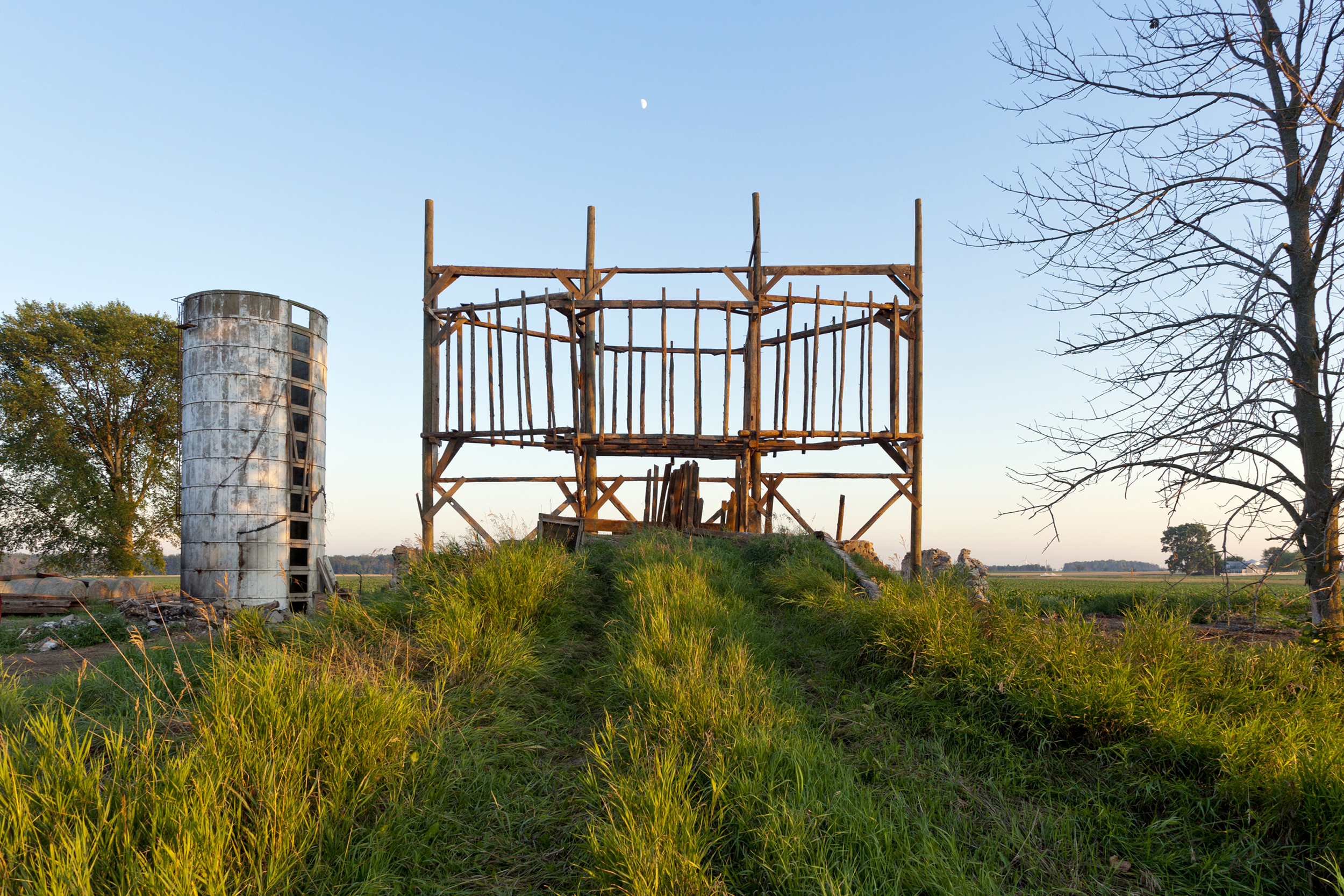
Celestial Ship of the North (Emergency Ark) aka The Barnboat, 2015/16. Images courtesy of the artist and David Klein Gallery, Detroit.
By Scott Hocking.

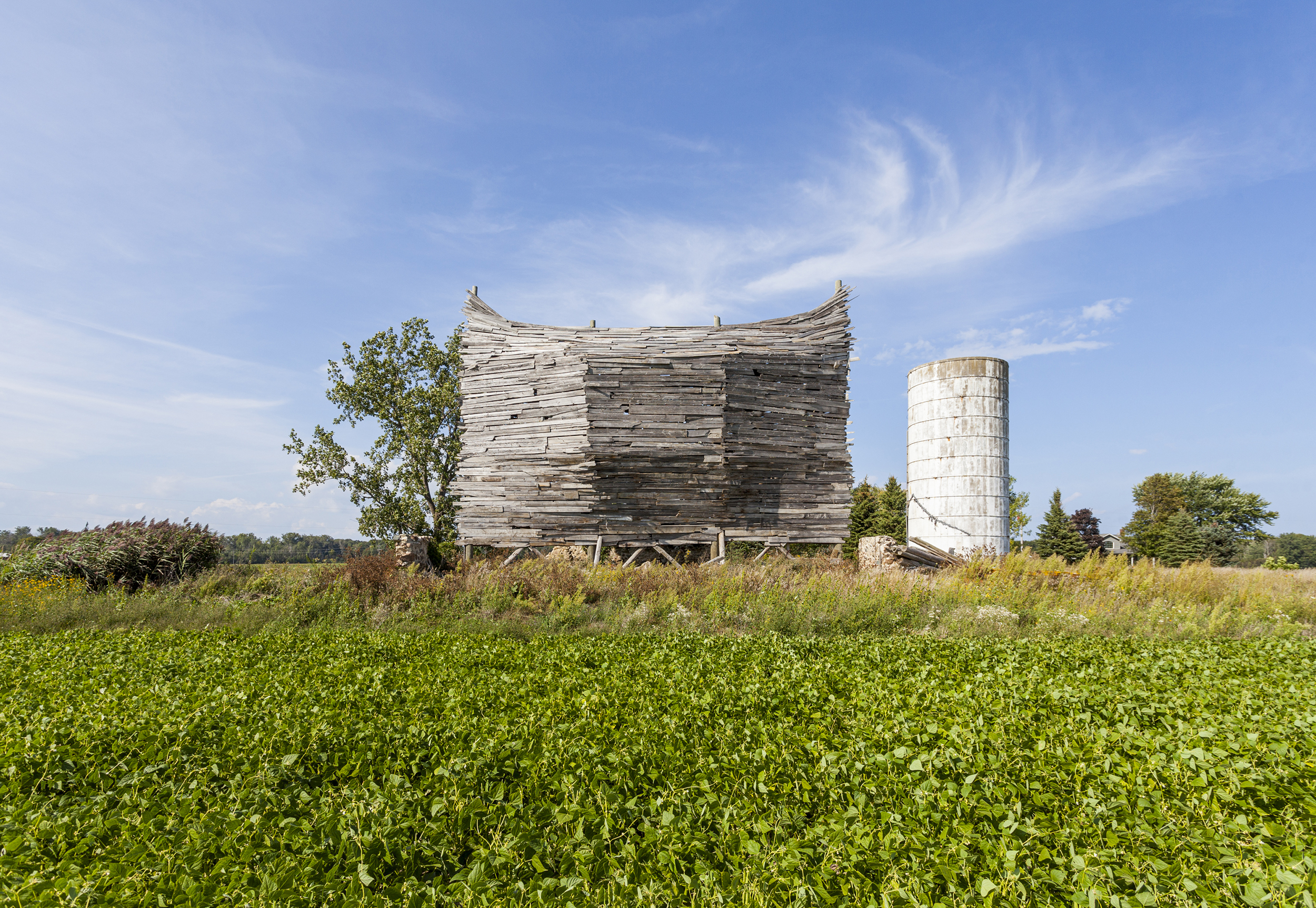
A SECOND LIFE FOR A BARN
Not long after HDL’s successful project, artist Scott Hocking described his long-time desire to deconstruct a barn, turn it upside down and build what he initially conceived of as an ark out of its original materials. The conversation took place at an opening at Public Pool art space in Hamtramck (which I co-founded) while ingesting cans of Stroh’s. The Coys and I had always talked about having another artist create a follow-up piece, and Scott’s interest helped put form to that idea. As a result, I started openly fantasizing about the concept of doing ten large-scale installations in ten years in the area. Timing didn’t work out to execute that exact vision, but in 2015, two years after the HDL piece, Hocking and I did find a massive turn-of-the-century barn set alone in a field about seven miles outside of Port Austin. It was teetering and ready to come down in the next storm, and, as luck would have it, the owner was a long-time family friend and agreed to donate it to the project.
As Hocking began – a single man wrestling with the beams, siding, roof, and interior inhabitants of a deteriorating gothic-style, 1890’s barn – the ambition of his idea became immediately apparent. What unfolded over the next 10 weeks was like a performance art piece that almost trumps the final object now standing as its only witness.
Hocking often works in an anthropological way, and intensely observed and considered every object in the barn, the history of the Goretski family who owns it, and the community itself. The idea of hard work against the elements, the craftsmanship and strength represented in the massive hand-cut beams and wood pegs that held the structure together, and the suspicious eyes and conversations of passersby all factored into the artists’ thinking. Indeed, these are the things that, to my mind, drove him to unconsciously punish his body to the point of pinching nerves that knocked the project off schedule for several weeks. Exposed to elements on a sixty-foot lift for much of the time, Hocking became acutely aware of the weather, particularly the wind. Like the farmers who have worked that field for decades, he had to adapt almost hour-by-hour.
One can see the orientation of the final object built to mitigate the ongoing impact of a prevailing wind that blows storms from the northwest off Lake Huron.
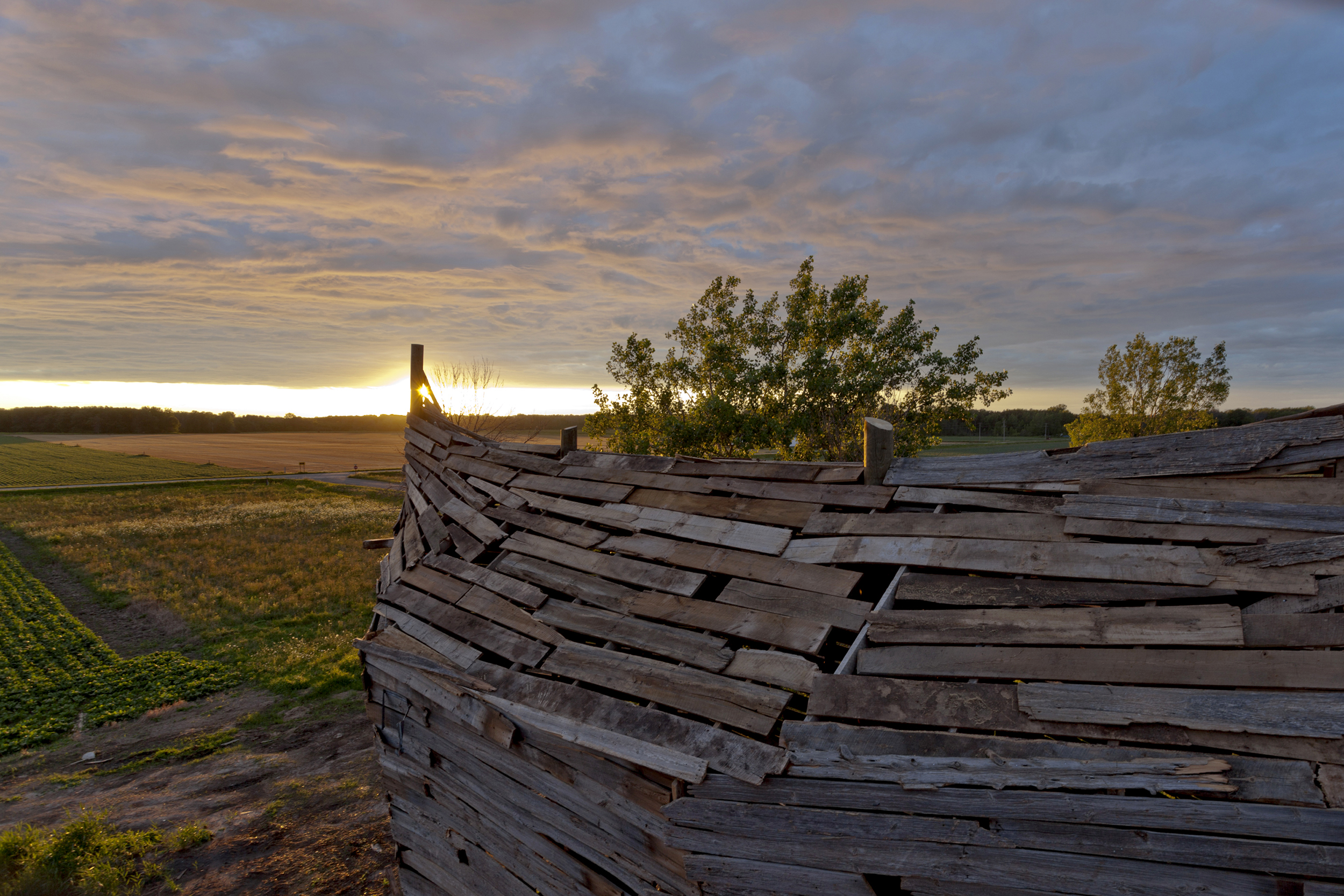
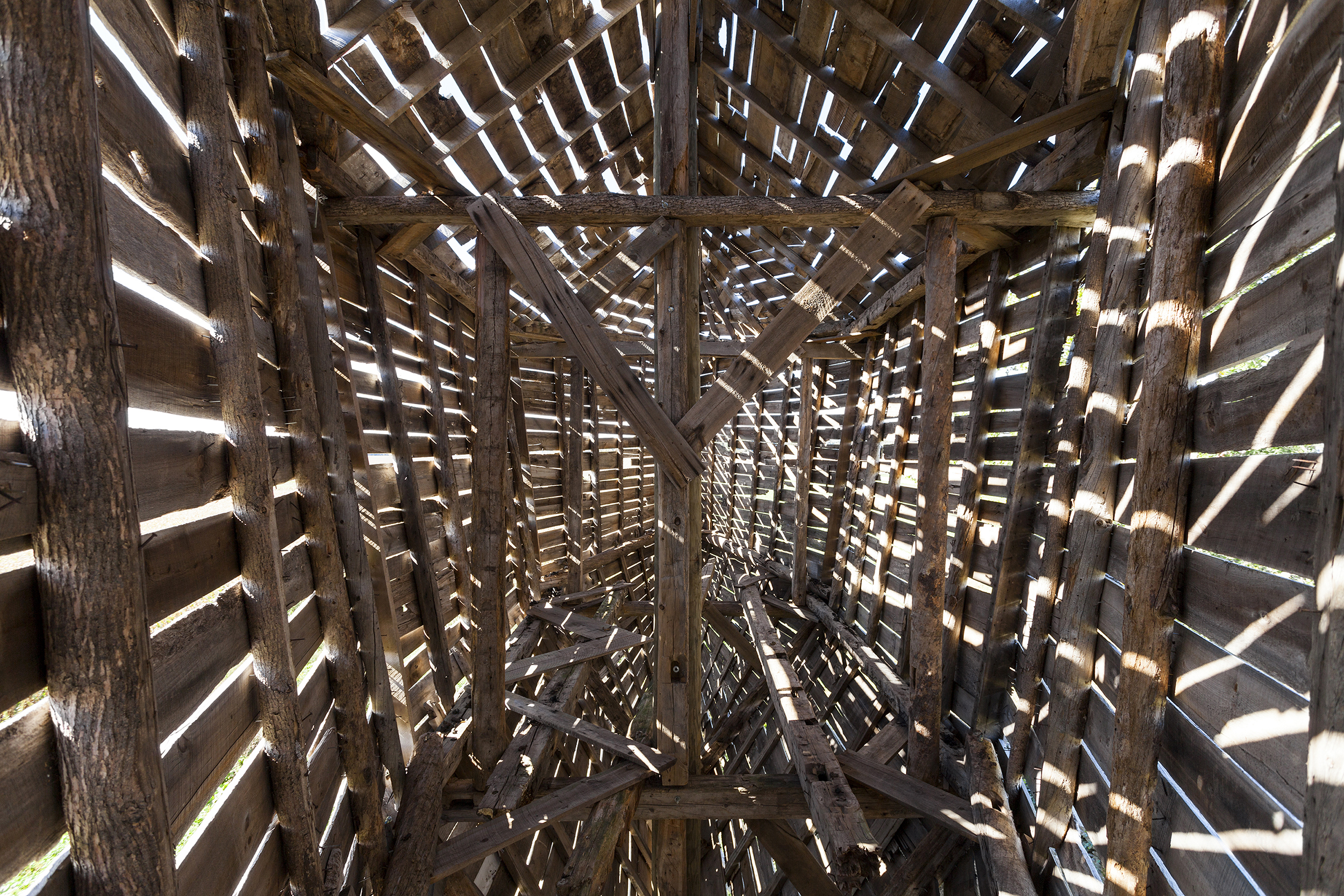
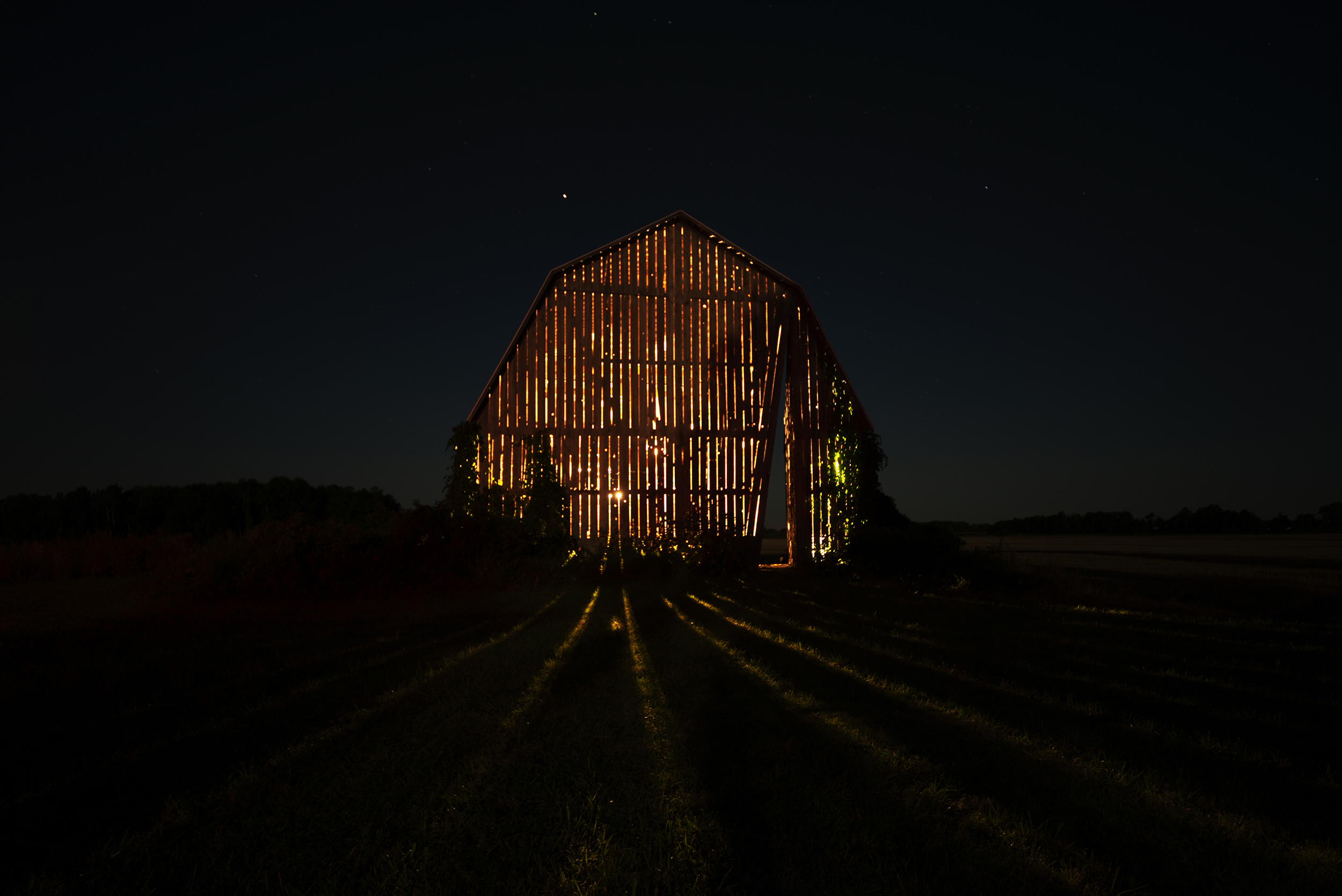
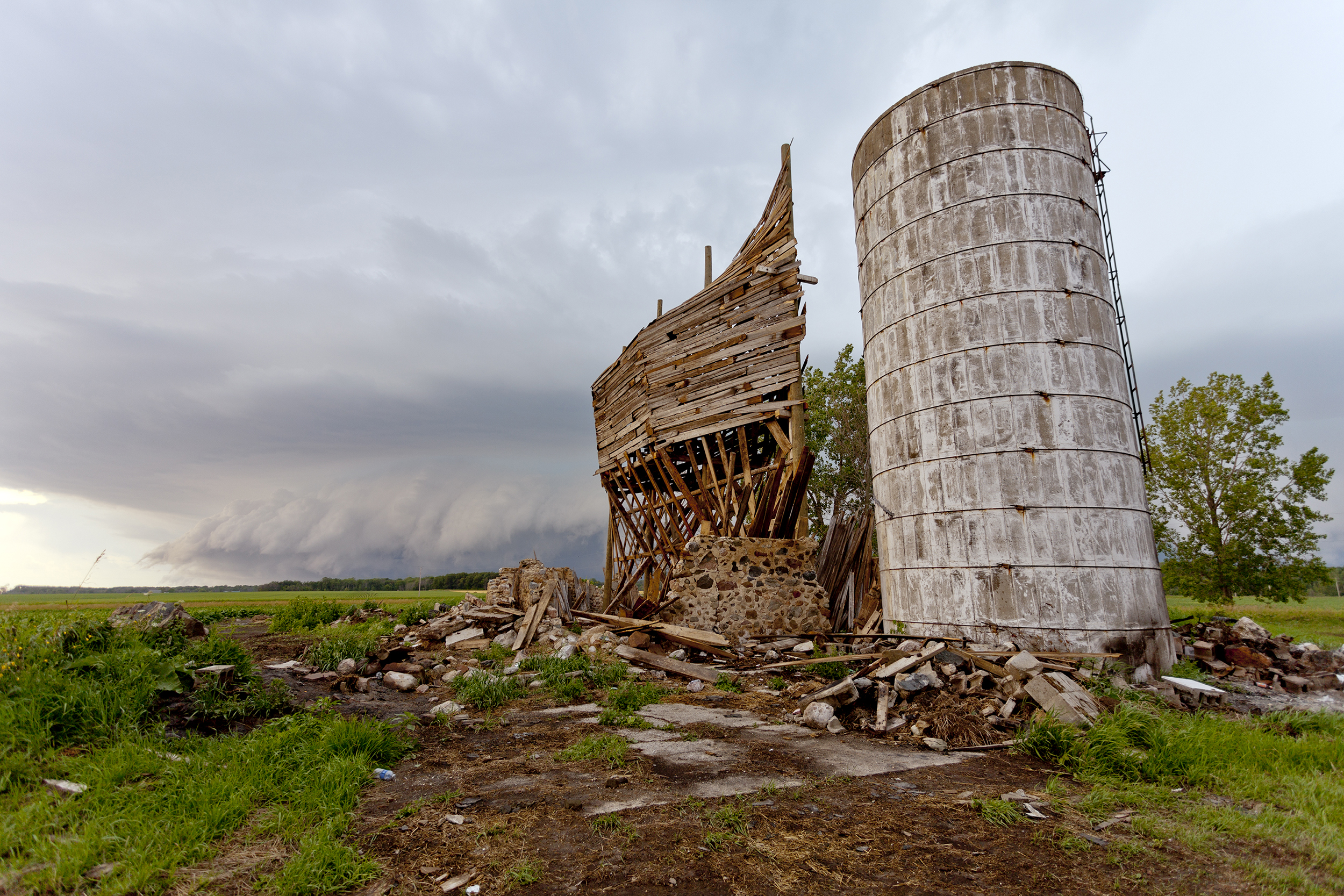
53 NORTH RISING
With these two notable large-scale installations – Celestial Ship of the North, 2015 and Art in the Public Realm: Rural Editions, 2013 – it became apparent that something very special was happening in Michigan’s Thumb. Artists were exploring powerful new ideas. Media coverage was heavy. People from around the country were visiting and/or engaging with the art. So, we continued to expand the scope and vision of this emerging project.
Architect Catie Newell was commissioned for the project’s third installation. Newell, whose creative practice has been widely recognized for exploring design construction and materiality in relationship to location, geography, and cultural contingencies, was a natural fit. Like the first two projects, a free-standing barn was secured. Newell had worked with similar structures in the past with an interest in re-working existing spaces by exploring materials, textures, and the effects of light or lack thereof.
In her Port Austin piece, Secret Sky, she considered the skin of the barn, which offered a visual appearance that is delicate and porous to light at both day and night, and allows the sky to enter and cut through the building. Thanks to a robust interior architectural intervention, Newell was able to create a subtle “slice” in the barn that joyfully confuses the viewer on the exterior in both its striking visual lines and its ability to seemingly remain standing against the laws of gravity. The piece is lit from the inside for several hours at night thanks to a timer and power from solar panels, a beautiful and haunting lantern from the road that only reveals itself as a barn upon closer inspection. The project was completed in Fall, 2017.
Throughout the development of each project is an ongoing interplay between urban and rural, which is not insignificant considering today’s political climate and the stereotypes around how each distinct community might see the world. Individually, artists have had the opportunity to get out of the city and ply their trade in an entirely new context, which has the potential to take them in new, exciting directions. The local communities, in turn, have been engaged with dinner parties, artist talks, school visits, and many on-site pop-ins during lengthy installations. And, while time and money often seemed to weigh against aspirations for each project, including the current desire for a fourth installation, an artist residency program has been established in Port Austin and there is more local infrastructure and momentum now in place. Response has mostly, but not entirely, been positive as we continue to balance tensions around intent, interpretation, preservation, and beyond. Much like in Detroit.
The astonishment that occurs when one encounters an individual piece can only multiply when engaging the pieces together as part of a larger project. This is where gold can be mined and magnified if we are to continue. Each individual work either is, or promises to be, worth a trip to Port Austin. Although spread out over several miles, in total they are quietly becoming one of the more surprising and intriguing outdoor sculpture parks in the country. As the Detroit News recently said, “Something strange and marvelous is rising above the beet fields at the tip of the Thumb.”
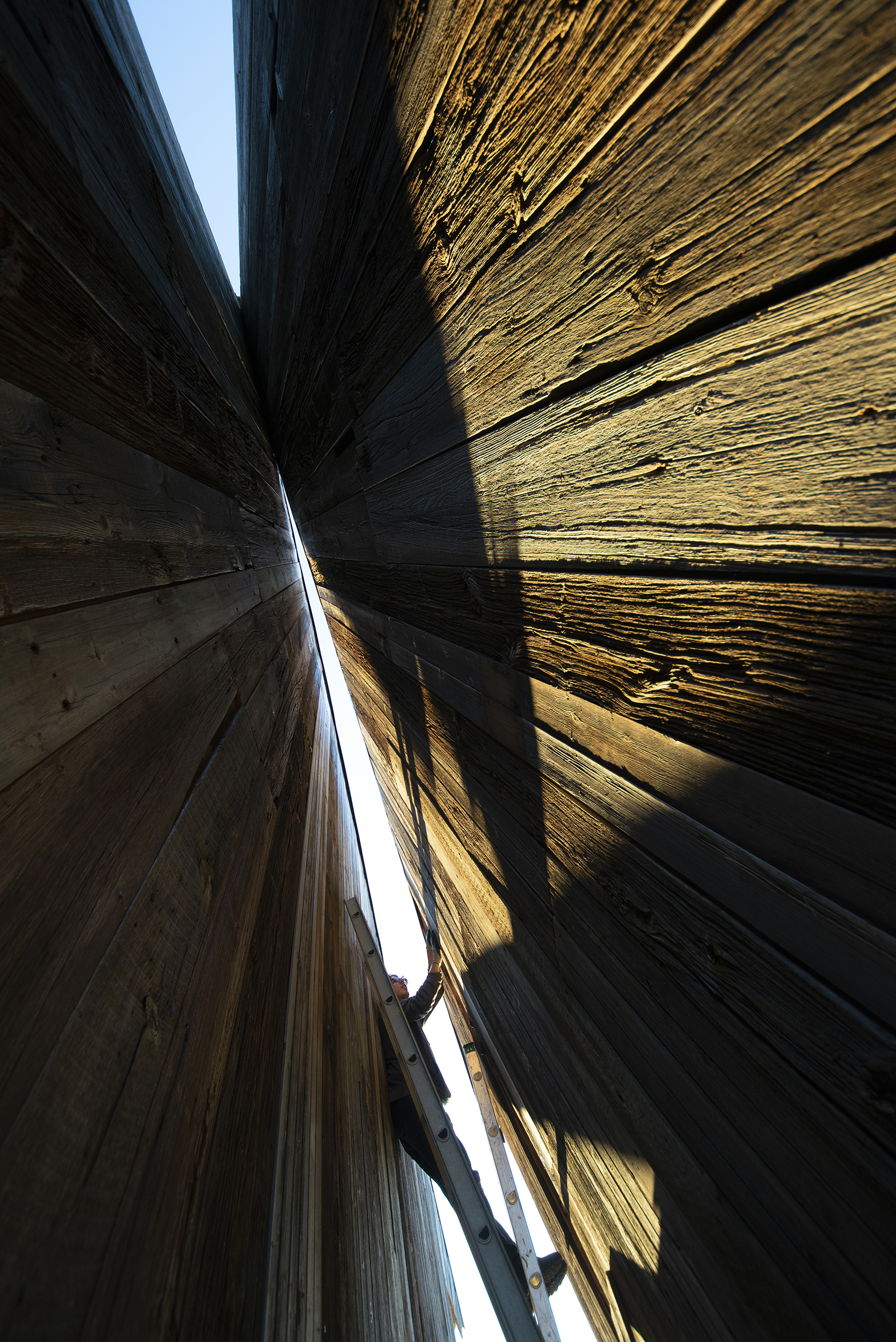
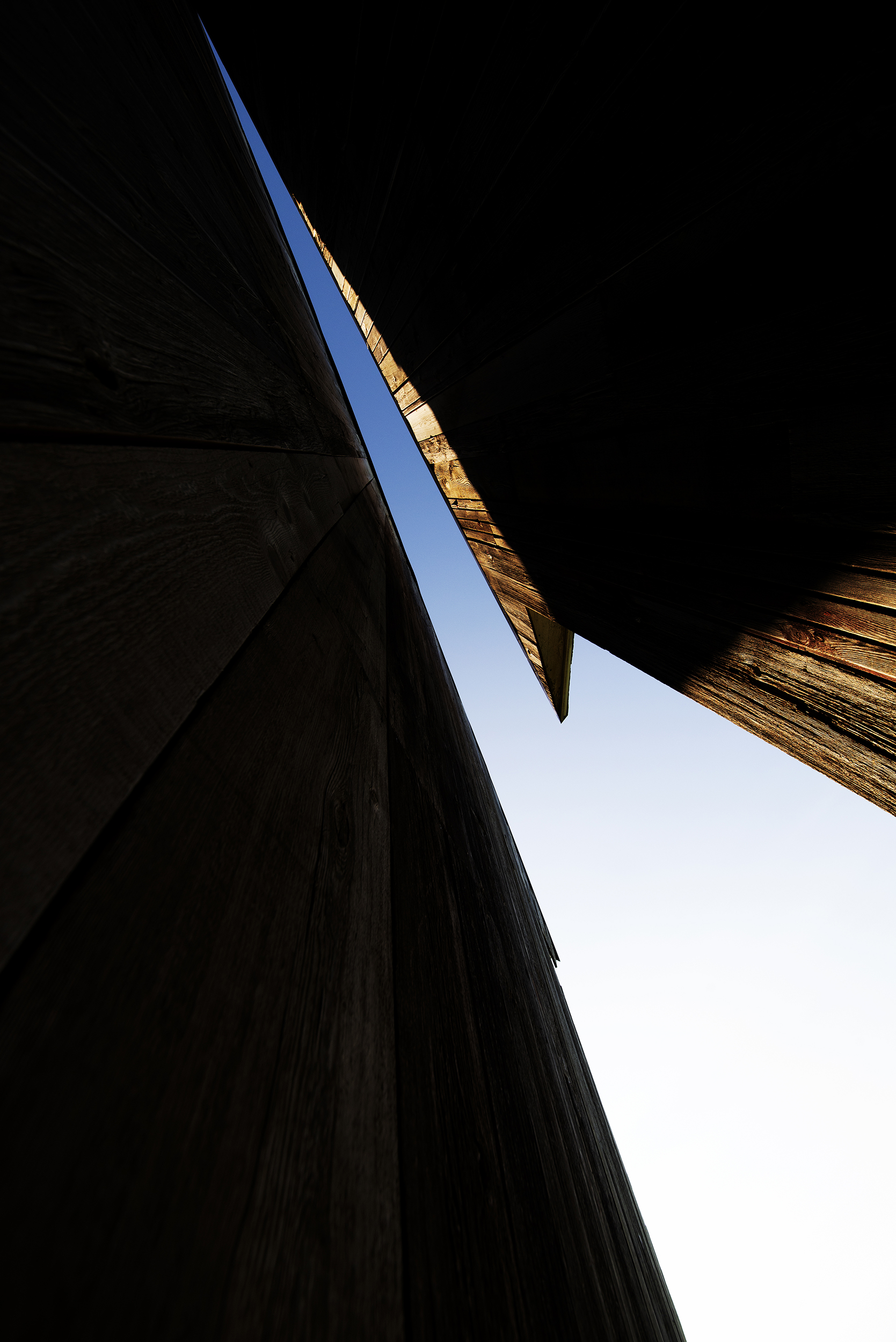
Secret Sky, 2017
By Catie Newell
Port Austin, Michigan, USA. Images courtesy of the artist.
